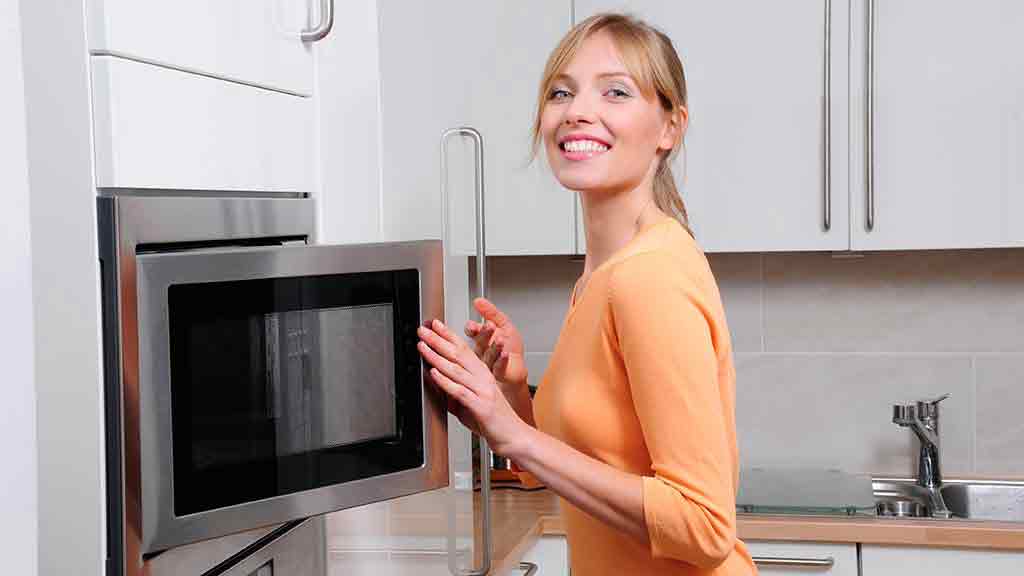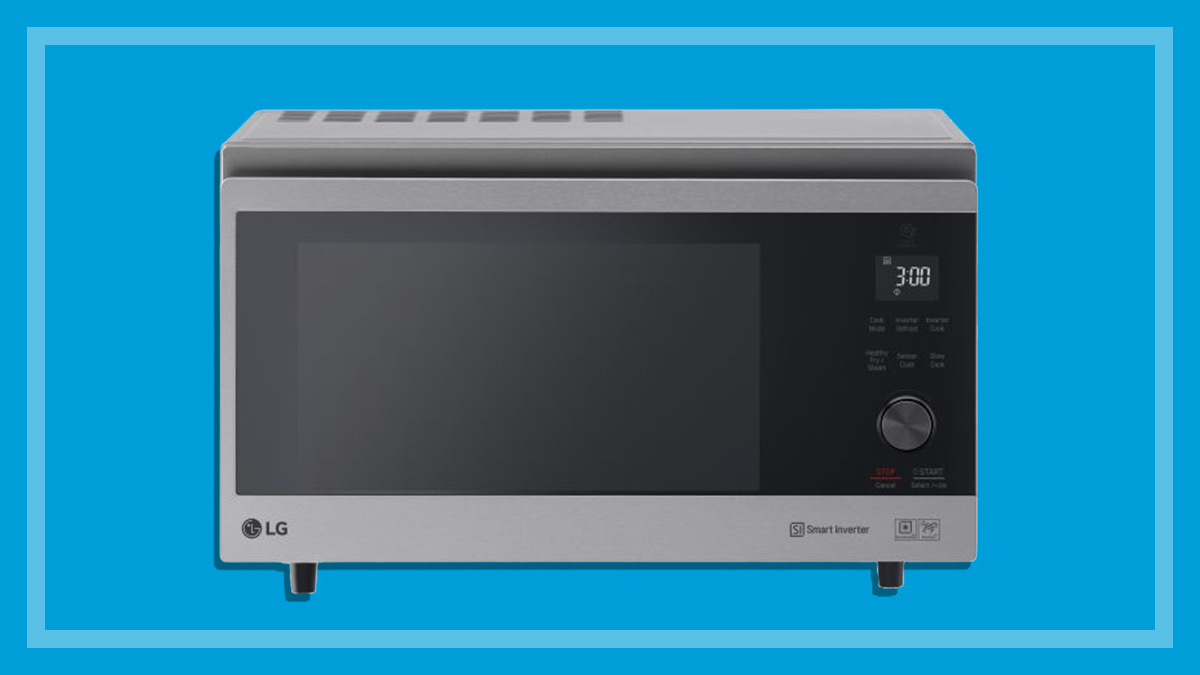Get our independent lab tests, expert reviews and honest advice.
What to know before buying a convection microwave

Convection ovens, also known as combination ovens, are the multi-taskers of the cooking world and are a godsend for people who don’t have a lot of space. They’re handy for a studio apartment, caravan or holiday home, or where a full-sized oven wouldn’t fit.
On this page:
- What is a convection microwave?
- The pros and cons of convection
- How to use a convection microwave
- What to look for in a convection microwave
- Using a convection microwave safely
- Combination cooking
- How to clean a convection microwave
- Installing a convection microwave
- How much do convection microwaves cost?
They can also be a useful addition to full kitchens if you think you could use more than one oven when cooking up a feast.
What is a convection microwave?
A convection microwave oven combines two appliances into one. They can operate as a standard microwave, but they also have an extra heating element and fan allowing them to operate as an oven too (they can even work in combination mode where microwave, bake and even grill functions are combined). With a convection microwave you can bake, roast and crisp foods as you would in an oven.
The pros and cons of convection
Pros
- Can be very convenient, effective and fast, especially for high-temperature cooking such as roasts, pastries and pizza.
- Quick to preheat, with oven temperatures up to 240°C.
- Great for speedy reheating and crisping of pastry; melting and browning cheese toasts; and browning au gratins.
- Suitable for a small family, they can accommodate a roast or a large pizza. There are models available with two shelf positions for multiple shelf cooking.
- Convection microwaves are cheaper to run than an oven so there can be a considerable saving on energy costs.
- They’re smaller than conventional ovens, and suitable for small kitchens, caravans and holiday homes.
Cons
- They have smaller cavities than an oven so cooking is limited to one type of food at a time.
- The oven cavity needs to be cleaned after each use as any grease or residue will be baked on with the next use and be difficult to remove. It also slows down the microwave cooking time as it cooks the residue as well as the intended food.
- They can be difficult to clean as most have stainless steel interiors.
- Grease from fatty foods can splash onto the interior walls, leaving grease marks that are difficult to remove.
- There’s no bottom element, therefore there’s limited browning and crisping for any foods that require base cooking such as pastry, pies and pizza. Some models have a crisp plate that helps to brown and crisp the bottom of the food, but this still won’t give as good a result as an oven with a bottom element.
- They can be tricky to use, especially if you’ve never used one before. Detailed instructions and cooking guidelines are important.
How to use a convection microwave
For reheating leftovers, defrosting frozen foods or cooking vegetables, you can use the microwave functions as you normally would. Sensor and auto functions can be useful in these cases.
If you’re using the oven in convection mode to cook up a roast or baked goodies, you’ll need to preheat the microwave oven. The best way to familiarise yourself with convection cooking is to follow the manufacturer’s instructions on using the convection mode. Many convection microwaves come with a rack to place dishes on, allowing for air circulation through the cavity and even cooking.
What to look for in a convection microwave
Visibility
A bright interior with a light and large transparent viewing window allows you to check your food as it cooks. We give each model a rating for visibility.
Ease of use
Look for easy-to-use controls and good instructions on the display. The best ovens won’t require you to refer to the instruction manual but comprehensive instructions and cooking guidelines are useful to have nonetheless.
Cleaning
Check there aren’t too many holes or gaps inside the oven, or seams and crevices on the outside that can trap food and grease. It can be hard to clean around exposed grill elements; some models have a grill element built into the roof instead. Stainless steel exteriors look good but can require extra attention to keep them free from fingerprints. Some manufacturers are introducing catalytic liners however they have limited coverage.
Size
Check to make sure your cooking dishes will fit in the microwave. The oven also needs clearance around the outside for ventilation – at least 5cm at the sides, 10cm at the rear, and 15–40cm on top.
Automatic functions
These prompt you to enter the weight and type of food and then automatically calculate the cooking time required. We’re finding manufacturers are adding more auto cook functions with set temperatures and microwave power with either no option to adjust temperature and power, or only being able to adjust the temperature, so there is limited manual control.
Quick boost/start
This starts the oven usually with the press of a single button. With most microwaves, the cooking time increases in one or half-minute increments if you press the button again.
Time adjust
This lets you increase or decrease the programmed time without stopping cooking.
Delayed start
Lets you program the oven to start cooking at a pre-set time. But don’t leave food in the oven too long as it might spoil.
Sensor cooking
Sensor programs take automatic functions one step further by measuring vapours emitted during cooking to control the cooking time.
Auto-programmed functions
For commonly cooked foods, you can be prompted to add the serve size or weight, and the oven will work out a cooking time.
Multi-stage cooking
Microwaves with this feature can be programmed to perform a sequence of functions, such as defrost, cook and then leave to stand.
Child lock safety
You can push a sequence of buttons to deactivate the microwave.
Kitchen timer
Can be used to time other things such as boiling an egg.
Cooling fan
Many microwave ovens (both convection and regular microwaves) have a fan to cool the interior after cooking, but some are noisy. They can run for several minutes after cooking has completed, especially after using the oven.
Multifunctional models
As with many other products, manufacturers continually look for ways to incorporate more functionality, and convection microwaves are no exception. We’re seeing more models become available with extra functions like the much loved air fryer, but our testing has found that using an air fryer function in a convection microwave doesn’t produce the same results as using a standalone air fryer.
Convection microwaves can microwave, grill and oven bake and can produce similar results to an air fryer, even without a dedicated air fryer mode. Consider how you cook and if an air fryer and convection microwave is useful. You might find buying a standard microwave and a separate dedicated air fryer may be a cheaper option to consider.
Using a convection microwave safely
Convection cooking heats up the entire inside of the oven, so the appliance has to be insulated to prevent the exterior becoming dangerously hot. We find that the controls, door glass and handle do heat up more than with a basic microwave oven, but not dangerously so. These ovens are far better insulated than small benchtop toaster ovens.
Be careful removing cooked food as the inside of the oven door gets very hot in convection mode and may swing back onto your hand. Always use oven gloves and let the oven cool before cleaning the interior.
Also remember that while the oven interior is still hot from convection cooking, you should avoid using microwave-only cookware in it, as the cookware may be damaged by the heat.
Combination cooking
Combination mode – using convection and microwave cooking at the same time, and maybe the grill as well – can speed up cooking and give very good results.
It is suitable for:
- roasting meats, poultry and vegetables
- baking fish, casseroles, and potato and pasta bakes
- cooking cakes, pastries and slices.
Metal cookware can be used during combination mode. However, some metal utensils may cause arcing if they come into contact with the oven walls or racks.
How to clean a convection microwave
- Make sure the oven has cooled slightly before cleaning. Unlike a standard microwave, the sides of a convection microwave oven can get quite hot after use.
- Do not use caustic cleaners, abrasives or harsh cleaners or scouring pads and we recommend against using harsh oven cleaners. That’s because they contain strong chemicals that can remove the protective layer on enamel and stainless steel surfaces, which could potentially cause the metal in your oven to rust in places.
- To clean the interior, wipe out with warm soapy water. For heavy soiling, a bowl of water can be heated until boiling, then left for around a minute, or until the water has softened the residue. The steam will collect on the walls and soften the dirty marks so the oven can then be wiped clean using washing-up liquid. For stubborn residue, a non-scratch scourer can be used.
Installing a convection microwave
Built-in models
- All built-in models must have a trim kit and be installed by a qualified electrician.
- Can be integrated within a kitchen to streamline with other integrated appliances. They’re usually installed in a 600mm wide cavity and sit flush with the surrounding cupboard units.
- Can’t have a rear wall behind the oven as this will reduce air flow and restrict ventilation and air intake outlets.
- Great for smaller kitchens as they save on bench space.
Freestanding/benchtop
- Can only be installed as freestanding; they can’t be built-in or placed in a cabinet.
- Need to be placed on a stable flat surface to limit noise and vibration.
- Feet on the microwave help to keep the unit stable on the bench.
- Should not be placed where heat and steam are generated (for example, next to a conventional oven).
- Don’t place heavy items on top of the unit.
- Don’t cover or block any of the vents at the back of the unit – this is where the hot air escapes, and blocking the vents could cause the unit to overheat and malfunction.
- Take up valuable bench space.
All convection microwaves ovens require at least 10cm clearance at the sides, approximately 15cm at the rear, and 15–40cm on top.
How much do convection microwaves cost?
Convection microwaves typically cost anywhere from $160 up to $1200. The most expensive model we’ve tested is $2250.






